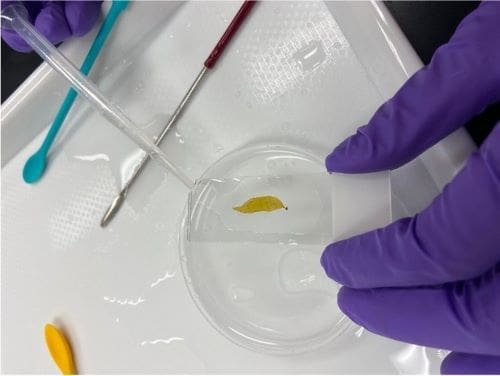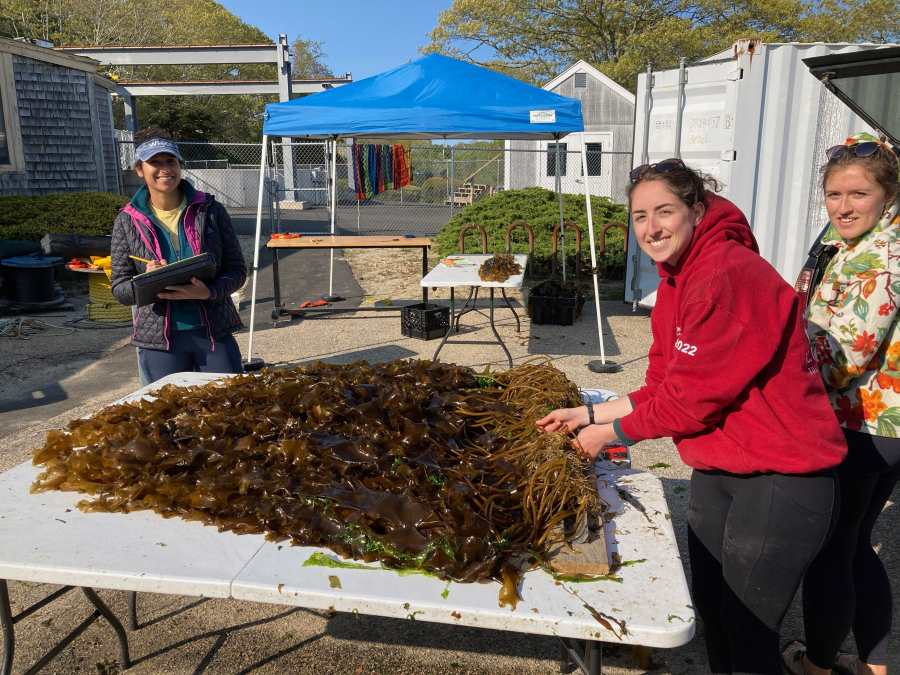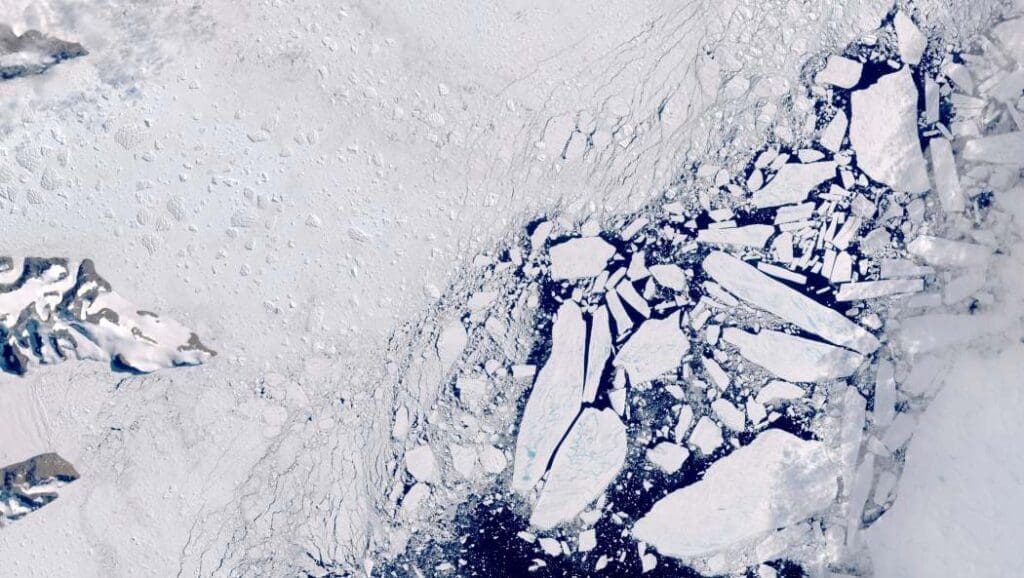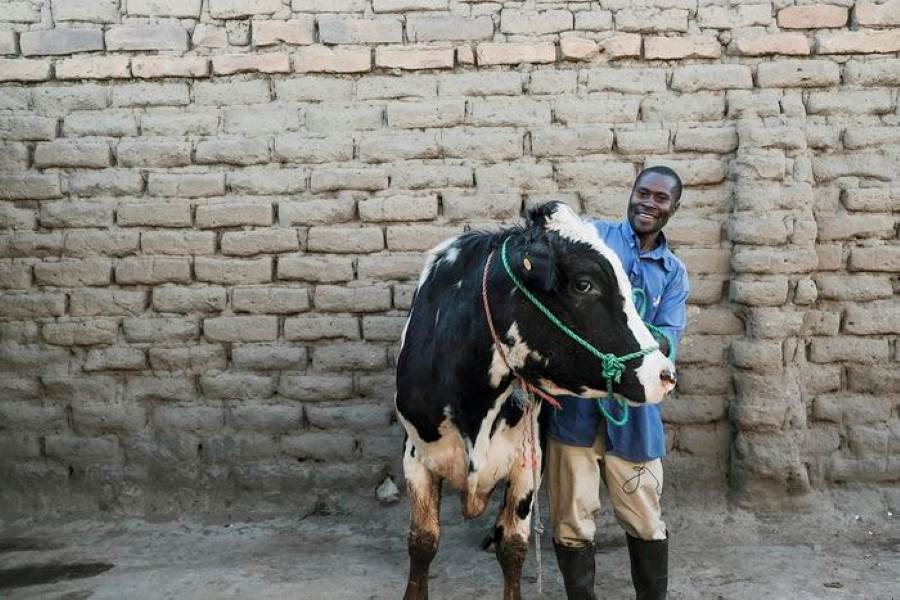Explore the latest insights from top science journals in the Muser Press daily roundup, featuring impactful research on climate change challenges.
In brief:
Scientists from the Woods Hole Oceanographic Institution identify heat-resistant kelp strain
Like most aquatic vegetation, kelp is being negatively impacted by climate change. Warming ocean temperatures have led to shorter growing and harvesting seasons, including for sugar kelp, one of the most commonly farmed kelp species. The loss of kelp populations can significantly impact ecosystems, and potentially the growing demand for sustainably farming food, feed, fertilizer, medicine, and cosmetics.

To give kelp a chance against climate change, scientists from the Woods Hole Oceanographic Institution (WHOI) have identified kelp species with natural adaptations to cope with heat.
In a new study published in the Journal of Applied Phycology , WHOI experts identify new strains that could prove to be more resilient in warmer waters.
Researchers first assessed the heat tolerance of kelp gametophytes, the microscopic male and female stages that fertilize and produces kelp blades. Gametophytes were isolated from 14 different populations collected from nearshore waters between New York and Maine. Prior to testing their tolerance to temperatures as high as 24°C (75°F), these were grown in a lab environment for 4.5 years until the second round of research.
In the second round of research, gametophytes that were more heat tolerant were crossbred with other, more heat tolerant strains. At the same time, strains with lower heat tolerance were crossbred. Researchers then tested the heat resistance of their offspring (kelp blades) in a controlled environment.
“There is genetic diversity among sugar kelp populations, so it’s likely that some kelp may already have useful adaptations to cope with warmer temperatures,” said Sara Gonzalez, a guest investigator in WHOI’s Applied Physics and Ocean Engineering Department and lead author of the study.
“We found that when we crossed gametophytes that we identified as heat-tolerant, they produced kelp blades that grew better under heat stress compared to the offspring of gametophytes that were not heat-tolerant. This is an important step toward understanding how to breed heat-tolerant kelp and helping kelp farmers increase reliability in their yields in warming ocean waters.”
This study area focused on strains found in the Northeastern U.S., where kelp beds are declining, and in some cases, no longer growing. This is particularly important to note in the Gulf of Maine, which is the fastest-warming body of water in the world. Productive kelp farms here play a role in the fight against global warming, acting as a carbon sink by sucking up carbon dioxide from the oceans. Kelp can also elevate pH levels in their immediate surroundings and supply oxygen to help mitigate the local effects of ocean acidification.

“Kelp is incredibly versatile. It can also be converted into new fuel sources and can potentially reduce greenhouse gasses and our dependence on fossil fuels,” said WHOI’s Scott Lindell, a research specialist in aquaculture technology and co-author of the study. “In a hotter and drier world of the future, it will be hard to find a better resource for biofuels than farmed seaweed. This study allows us to accelerate the breeding of heat-tolerant kelp strains, thus helping sustain the industry. ”
“Future research could address whether one kelp parent transfers more heat tolerance to their offspring,” Lindell continued. “A larger sample size and further work could also show which part of kelp genes is related to heat tolerance.”
Journal Reference:
Gonzalez, S.T., Bell, T.W., Aydlett, M. et al. ‘Predicting heat tolerance in sugar kelp juvenile sporophytes via gametophyte heat stress testing’, Journal of Applied Phycology (2025). DOI: 10.1007/s10811-025-03454-8
Article Source:
Press Release/Material by Woods Hole Oceanographic Institution (WHOI)
Model of Antarctica’s water enhances sea level forecasts
Researchers have generated the first dataset of water flow beneath the entire Antarctic Ice Sheet, which will lead to more accurate projections of sea level rise.
The team from the University of Waterloo modeled Antarctica’s subglacial environment. The dataset represents the researchers’ best approximation of what the water flow underneath the ice sheet might currently look like. The results include numerous subglacial lakes developing below ice streams in both East and West Antarctica, and an extensive network of subglacial water channels that discharge large fluxes of water under many major glaciers.

The model calculates how fast subglacial water is flowing and where it accumulates below the ice. It will significantly enhance the scientific community’s ability to accurately predict sea level rise from climate change.
The study, ‘Antarctic wide subglacial hydrology modeling’, appears in Geophysical Research Letters.
“Sea level rise will have negative consequences for us all,” said Dr. Shivani Ehrenfeucht, post-doctoral fellow in the Faculty of Environment. “It is important for projections of sea level rise to be as accurate as possible so that policy makers and stakeholders can plan and adapt while we as a society strive to reach zero emissions as quickly as possible.”
Before this continent-wide representation of the Antarctic subglacial environment, scientists had to estimate the water’s impact, but often this important factor would not be part of projections.
“The water layer between the ice sheet and the bedrock is either entirely ignored in projections of sea level rise or modelers have to make an approximation as to what this layer should look like,” said Dr. Christine Dow, professor in the Faculty of Environment and Canada Research Chair in Glacial Hydrology and Ice Dynamics. “Now we’ve provided the dataset as a product so there’s no excuse any more for not including this really important aspect of ice behaviour.”
Studies that include this water layer in their models of glacier flow end up predicting much higher degrees of glacier melt and mass loss by the end of the century.
At nearly 14 million square kilometres, the Antarctic Ice Sheet covers nearly all of the continent and is nearly one and a half times the size of Canada.
Journal Reference:
Ehrenfeucht, S., Dow, C., McArthur, K., Morlighem, M., & McCormack, F. S., ‘Antarctic wide subglacial hydrology modeling’, Geophysical Research Letters 52, e2024GL111386 (2025). DOI: 10.1029/2024GL111386
Article Source:
Press Release/Material by University of Waterloo
How a breeding network could build a genetic pathway to more productive and climate-smart livestock in Africa
African livestock producers have a unique opportunity to improve the production of meat, milk and eggs through modern breeding technologies and innovations being tested in Africa, according to a recent perspective paper published in Nature Genetics. With the right support, these advancements can enhance not only productivity but also climate resilience and sustainability.
Through strategic investment and collaboration, African livestock systems can harness tools such as genomic technologies and breeding programs to drive genetic gains. Supported by the African Animal Breeding Network (AABNet) — a platform of genetics experts, animal breeders, and professionals providing training, advice, and support — these efforts could lead to more resilient, efficient, and sustainable livestock production, strengthening food security and rural livelihoods across the continent, researchers say.

“In the past, genetic improvement efforts have largely focused on maximizing productivity, often overlooking environmental and climate considerations. Africa has a unique opportunity to take a different approach—one that balances productivity with sustainability, while ensuring interventions are farmer appropriate and support livelihoods,” said Professor Appolinaire Djikeng, lead author of the paper and Director General for the International Livestock Research Institute.
“When we design breeding programs with climate adaptation and mitigation in mind, farmers will have access to hardier, more productive livestock — and we can build livestock systems that work for both people and the planet.”
Currently, around 85% of the world’s livestock keepers are in sub-Saharan Africa (SSA), yet they produce only 2.8% of global meat and milk outputs. This productivity gap highlights a significant opportunity to enhance efficiency and climate resilience through improved genetics. Additionally, a rapidly growing and urbanizing population is set to increase demand for livestock products. In West Africa alone, which has the largest share of the continent’s livestock, demand for meat, milk, and eggs is projected to rise by 50% by 2050.
An international team of researchers, led by the Centre for Tropical Livestock Genetics and Health (CTLGH), developed the perspective paper, The African Animal Breeding Network as a pathway towards genetic improvement of livestock, which explores how AABNet could play a key role in transforming African livestock production systems.
AABNet facilitates genetic evaluation across multiple African countries, collecting, storing, and sharing livestock data to support the development of more productive and climate-resilient animals. It also strengthens professional development, educational partnerships, training opportunities, and entrepreneurship, promoting strategic collaborations to accelerate progress.
“This represents a timely opportunity, with support from AABNet, to improve agriculture and food systems at a time of population growth and changing climate, towards the United Nations’ and Africa Union’s vision for the continent,” said Professor Mizeck Chagunda, co-author of the paper and Director of CTLGH.
By connecting animal breeders across Africa, AABNet enables the exchange of information, evaluation systems, and tools to improve productivity and genetic advancements.
The perspective paper underscores the power of collaborative thinking in harnessing advances in genomic technology, digital tools and information and communications technology to establish a foundation for sustainable livestock improvement programs in Africa.
Journal Reference:
Djikeng, A., Olori, V.E., Houaga, I. et al. ‘The African Animal Breeding Network as a pathway towards genetic improvement of livestock’, Nature Genetics (2025). DOI: 10.1038/s41588-025-02079-4
Article Source:
Press Release/Material by International Livestock Research Institute
Featured image credit: Gerd Altmann | Pixabay




